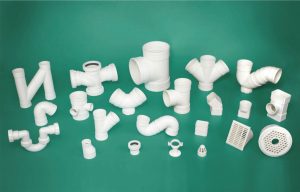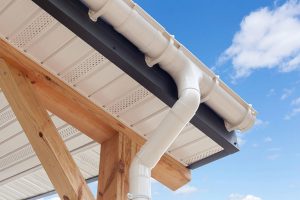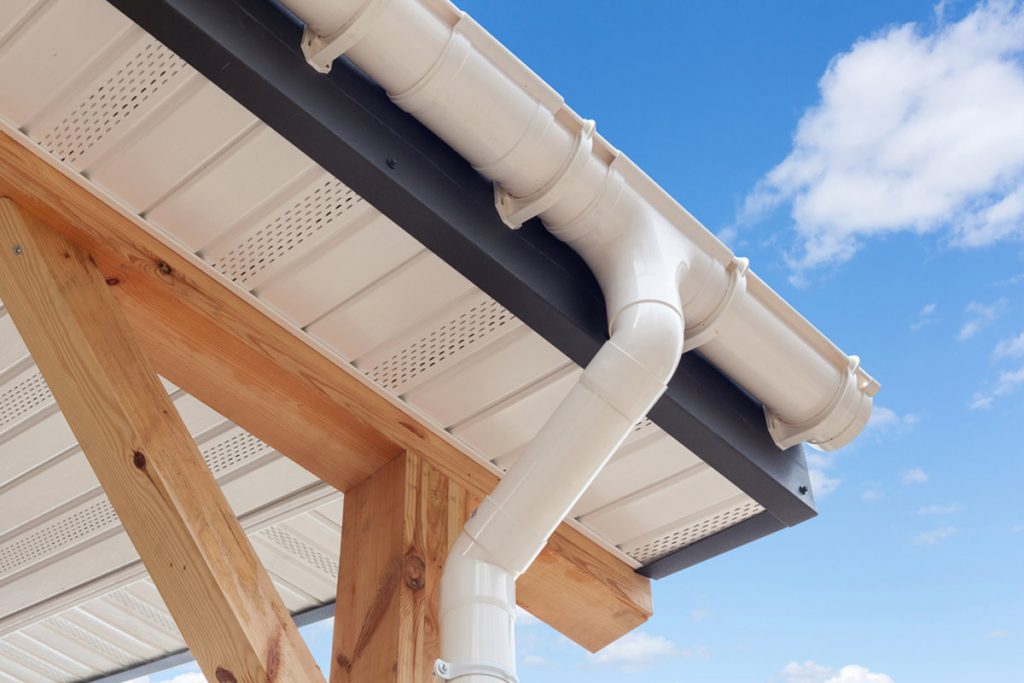Table of Contents
Gutters and downspouts Are the Key to Managing Rainfall, every building has some type of gutter system in place. These important features carry rain and melting snow away from the building to reduce the risk of roof leaks, muddy areas around the structure, and damage to structural components like the walls and foundation.
To be able to make sure the gutters are doing their job, you must understand how they are made, how they are supposed to work, and what routine maintenance is necessary to keep them in top working order. Whether you’re a homeowner or a facility manager, this guide will help you understand gutters and downspouts.
What Is a Gutter?
The first thing you need to know is exactly what a gutter is. The gutters on a building run horizontally at the bottom of each section of the roof. They are designed to capture the water that runs off from above, and then direct it on a slight downhill slope toward a downspout.
Gutters must account for every section of the roof. Simple construction like a common ranch home makes gutter installation simple, but it takes considerably more planning and work to set up gutters for more complex rooflines like those found on many new designs or on buildings that have been expanded.
Because of the potential for very complex configurations, gutters are installed with a variety of accessories. A standard straight stretch of gutter will still require a cap at each end that keeps water from running out of the ends.
It will also require one connection for a downspout for each unit of distance, depending on the area drained and the size of the gutter. Complex rooflines will need an inside corner and outside corner connections, and every gutter can benefit from a leaf filter or cover to help keep the most common gutter obstruction out of the gutters and downspouts.
What Are Downspouts?
Equally important to the gutters are the downspouts. It does no good to move all that water to a runoff point if the downspouts do not properly carry the water down to the ground.
So with that said, what is a downspout? Simply put, it is an enclosed pipe-like structure that attaches to the gutter and directs water to its final discharge point.
The number of downspouts is dictated by the size of the area being drained. If there are not enough downspouts, the gutters will overflow. If there are too many downspouts,
it’s a waste of money and could create unnecessary drainage problems on the ground.
Your downspouts must be properly attached and sealed to the gutters. They should also be securely fastened to the house on their way down, keeping a low profile by working around trim work and other features before finally reaching the discharge point.
This can be as simple as an elbow discharge that pours the water out on the ground (often onto some type of deflector), if it will drain properly from that point. The downspout could also connect to a buried line that carries the water further away from the building.
Comparing Gutters and Downspouts
Gutters and downspouts are equally important, but they perform slightly different jobs. Each one complements the other to create an overall system that benefits the structure as a whole.
First, gutters are installed horizontally. They lie basically flat against the edge of the roof. They are pitched about a quarter inch for every ten running feet. That means that the gutter is about a quarter inch higher than the downspout opening at a point ten feet away from the downspout in either direction.
Gutters are also open at the top and closed at each end – for the most part. The ends are always sealed off, but the top may have a limited opening. Leaf exclusion systems will strain the water as it runs off, keeping the leaves out of the gutter while allowing the water to proceed into it.
These features are very helpful if you have deciduous trees (that is, trees that lose their leaves in the fall) in the area of your home. They can also keep out other obstructions like toys.
Everything we’ve described about gutters is the opposite with downspouts. They run vertically, carrying the water straight down instead of across the front of the house. They are also fully enclosed along their length with openings at the ends. This keeps the water contained and eliminates the seeping of water outside of the downspout.
Downspouts are also installed truly vertically, with very little deviation. This allows the water to move quickly to the discharge point and reduces the risk of obstructions. At the bottom, the downspout can carry the water away from the house in a number of ways.
The traditional setup was a simple elbow that sent water out onto the ground, often with some type of concrete or stone pad to slow its momentum. This is still widely used, but now many downspouts are connected to buried plastic lines that provide more control of the discharge point. This is especially helpful on flatter land where water might pool toward the house.
Gutters and downspouts are opposite in many ways, but as a well-designed, well-maintained system, they are a very effective tool for protecting your home from runoff.
Installation and Maintenance Tips
The most important installation decision you will make is who will install the gutters for you. Having a contractor who knows how to calculate the capacity of each gutter and each gutter downspout will ensure that the system can handle the demands placed on it by even the heaviest cloudburst.
Look for someone who is experienced and insured. Make sure they use quality materials and have a strong portfolio of quality work.
It’s also advisable to have some type of leaf exclusion feature, as we noted earlier. Leaves will quickly clog any gutter downspout if too many of them find their way into the gutters, so think about adding this accessory.
Finally, make sure you clean your downspouts at least twice a year and as needed. If you have gutters overflowing during rainfall or see slow discharge from one or more downspouts, you probably have a clog that you need to address.
Conclusion
When it’s not properly managed, water is one of the most destructive forces that any building can encounter. Make sure that your home uses quality drainage products from LESSO. Our gutters and downspouts are manufactured and installed to keep water in its place to protect your home, lawn, and landscaping.
FAQs about Gutters and Downspouts
It’s recommended to clean them at least twice a year, in spring and fall.
DIY installation is possible, but professional installation ensures optimal performance and safety.
Larger downspouts can enhance drainage, especially in areas with heavy rainfall.
Gutter guards can significantly reduce clogging by blocking debris while allowing water flow.
Recommend Reading


How to Choose the Right Drainage Pipe for Your Home
Do you need to update the drain pipes in your home? Your house drainage system is responsible for removing the wastewater from your home and


Are PVC Gutters Good?
Gutters are an essential part of your house as they protect your foundation, landscaping, and prevent your basement from flooding. Using PVC gutters and downspouts








